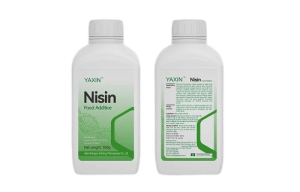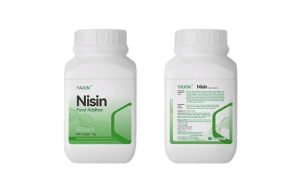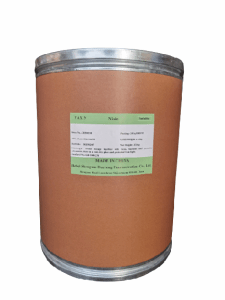
 CONTACT
CONTACT
- Linkman:Linda Yao
- Tel: +8618231198596
- Email:linda.yao@dcpharma.cn
- Linkman:CHARLES.WANG
- Department:Overseas
- Tel: 0086 0311-85537378 0086 0311-85539701
Order ε-Polylysine Hydrochloride in bulk,Appropriate Addition Amount
TIME:2024-12-25As an effective preservative, ε-polylysine hydrochloride is widely applied in various foods. Below is a summary of its optimal addition levels in different types of food:
1. Rice and Rice Products
·Applications: Cooked rice, rice-based products, etc.
·Optimal Addition Level: According to the announcements from the National Health Commission and related studies, the maximum usage level of ε-polylysine hydrochloride in rice and rice products is 0.25 g/kg. However, the specific addition level may vary depending on product type, production process, and storage conditions. For example, studies have shown that adding 10 mg of ε-polylysine hydrochloride to 50 g of rice can effectively produce an antibacterial effect.
2. Wheat Flour and Its Products
·Applications: Wet noodles, bread, pastries, etc.
·Optimal Addition Level: The maximum usage level of ε-polylysine hydrochloride in wheat flour and its products has not been explicitly specified. However, research indicates that the optimal addition level for wet noodles is 120 mg/kg, which minimizes the total bacterial count. When the concentration is below 0.05%, the preservation effect is comparable to the control sample. As the concentration exceeds 0.05%, the antibacterial effect strengthens, but it plateaus when the concentration reaches 0.15%.
3. Meat and Meat Products
·Applications: Fresh pork, chilled meat, processed meat products, etc.
·Optimal Addition Level: The maximum usage level of ε-polylysine hydrochloride in meat and meat products is 0.3 g/kg. For fresh pork, the optimal concentration when used alone is 400 mg/L, which effectively suppresses sensory quality deterioration, microbial growth, pH increase, and TVB-N (total volatile basic nitrogen) accumulation.
4. Beverages
·Applications: Fruit juices, corn-based beverages, etc.
·Optimal Addition Level: The maximum usage level of ε-polylysine hydrochloride in beverages is 0.2 g/kg. For instance, adding 30 ppm of ε-polylysine hydrochloride to corn-based beverages sterilized at 110°C for 40 minutes can allow the product to be stored at 37°C for more than 30 days.
5. Fresh Vegetables and Soy Products
·Applications: Fresh-cut bamboo shoots, edible mushrooms, soybeans, etc.
·Optimal Addition Level: For fresh-cut bamboo shoots and other fresh vegetables, ε-polylysine hydrochloride can slow spoilage caused by microorganisms and reduce water loss. The specific addition level may vary depending on product type and preservation requirements.
6. Seasonings
·Applications: Soy sauce, vinegar, etc.
·Optimal Addition Level: In soy sauce, the recommended standalone usage of ε-polylysine hydrochloride is 80 ppm. When combined with acetic acid, natamycin, EDTA, and potassium sorbate, it can extend the shelf life of soy sauce by up to 36 months. For vinegar, the recommended standalone usage is 60 ppm, and when used in combination with other preservatives, it can extend the shelf life by up to 35 months.
7. Whole Grain Products and Baked Goods
·Applications: Eight-Treasure Rice, mooncakes, etc.
·Optimal Addition Level: The maximum usage level of ε-polylysine hydrochloride in whole grain products is 0.4 g/kg. For example, the recommended standalone usage in Eight-Treasure Rice is 150 ppm, which can extend its shelf life at room temperature from 15 days to 3 months. In mooncake crusts, 60 ppm of ε-polylysine hydrochloride can significantly prolong the product’s shelf life.
Note:
The above addition levels are for reference only. In practice, adjustments may be necessary based on factors such as product type, production process, storage conditions, and the desired antibacterial effect. Additionally, the use of ε-polylysine hydrochloride should strictly comply with relevant national regulations and standards to ensure its safety and efficacy.
- Tel:+8618231198596
- Whatsapp:18231198596
- Chat With Skype







